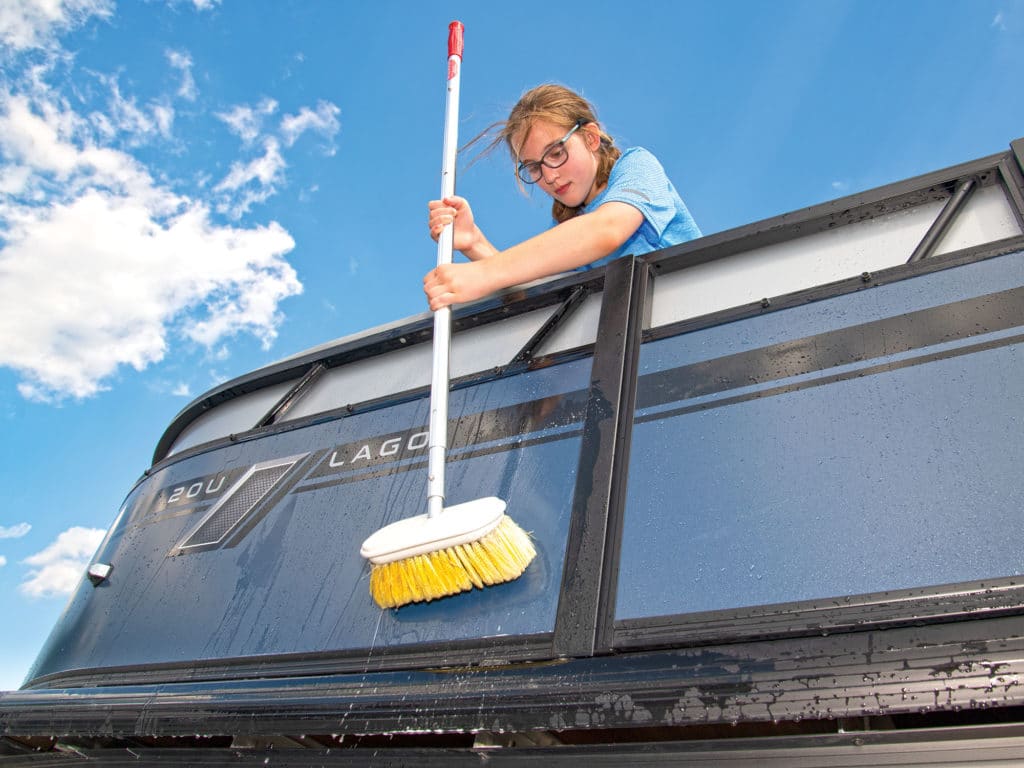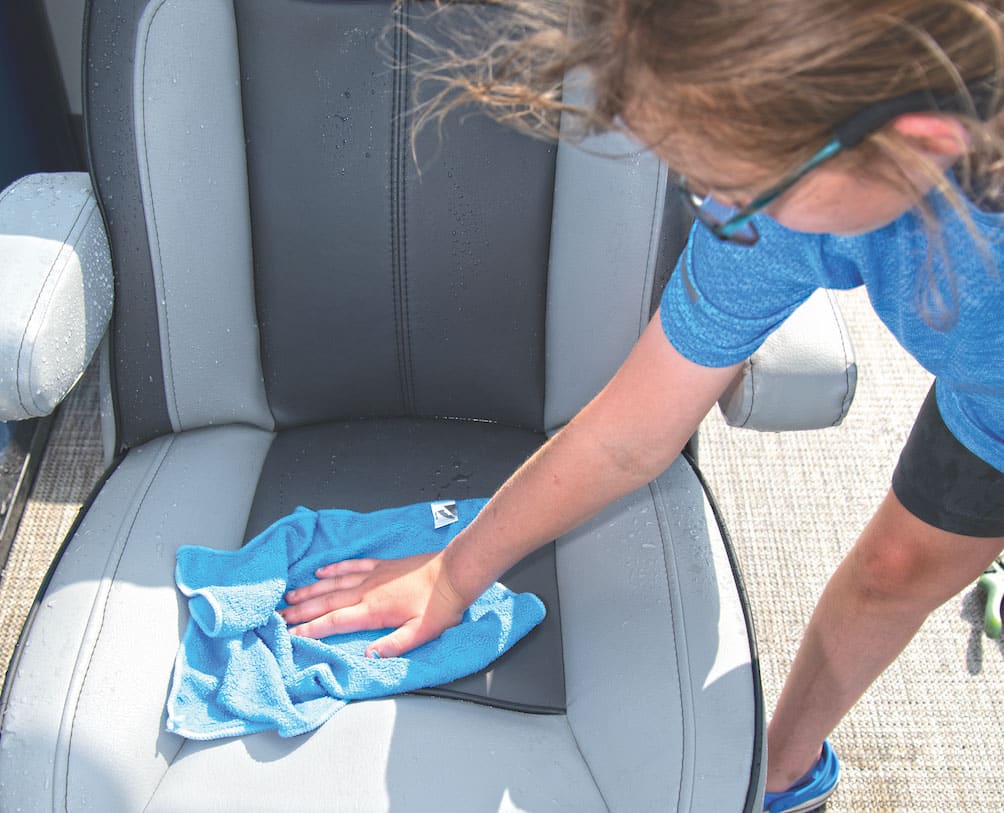
Pontoon boats invite on-water relaxation. But sometimes a ’toon’s laid-back persona makes it easy to gloss over maintenance, so we asked manufacturers for tips on keeping pontoon boats looking sharp and performing well.
Clean It
Coated aluminum doesn’t show dirt like gleaming gelcoat. A rinse goes a long way, but grime builds up. “Every few trips, give it a good washdown,” says Garrett Koschak, Manitou’s product strategy manager. He suggests Sea-Doo’s XPS boat wash, but any mild soap will do. Soap coastal boats more often to remove salt residue.
Spot-clean between washings too. “For the most part, a damp rag is enough,” says Rusty Kucher, Brunswick’s pontoon category director for Harris, Cypress Cay, Lowe and Princecraft. Be sure to check cleaning-product labels to avoid discoloring pontoon-boat aluminum, fading vinyl upholstery, or hazing acrylic windscreens. Wash any electronics with mild soap and a gentle rinse.
Don’t neglect the hulls either. “Aluminum tubes are particularly susceptible to stains and buildup,” Koschak warns. Pressure-wash hulls at season’s end to maintain boatspeed and fuel economy. Aluminum cleaners and protectants keep metal looking sharp.
Read Next: Essential Traits of the Best Pontoon Boats

Dry It
Hard-water spots aren’t all that noticeable—that is, until they build up. “It’s much easier to wipe water away with a chamois than to clean off mineral spots later,” says Wally Ross, Godfrey’s product director. Throw grimy synthetic chamois in the washing machine (but not the dryer), and use a clean one on clear windscreens or anything glossy. Dry electronics displays with a clean microfiber cloth. Upholstery can air-dry, but wipe it occasionally with Gold Eagle’s 303 or a similar protectant.
Cover It
Sun, water and grime affect boats cumulatively. “If you’re not using the boat for a while, cover it,” Kucher says. This is true for electronics too. “There is no reason to leave the sun banging on that equipment.”
There is one caveat: Don’t trap moisture within covers. Similarly, don’t cram wet lines, life jackets or swim toys into lockers because this invites permanent mildew damage. Prop open lockers to circulate air.
Air-dry Bimini tops and mooring covers before stowing them, give them an occasional soapy wash, and refresh water repellency as needed with aftermarket treatments.
Over-Winter Extra Steps
- Double-down on fuel stabilizer, don’t cover a dirty, wet boat, and ensure air circulation.
- Store fully charged batteries above freezing temperatures, if practical.
- Disconnect all wires, but zip-tie ring terminals together to speed springtime reinstallation.
- Dryer sheets repel rodents, and peppermint spooks spiders.









